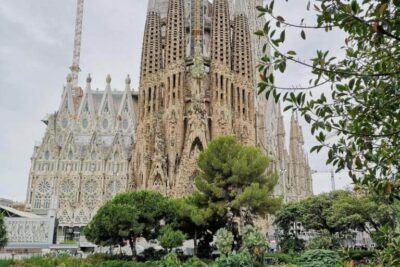
- The Architectural Genius of Gaudí: Unraveling the Sagrada Familia's Design
- Exploring the Cultural Significance of Gaudí’s Sagrada Familia
- How Gaudí's Sagrada Familia Reflects His Unique Artistic Vision
- The Ongoing Construction of the Sagrada Familia: A Testament to Gaudí's Legacy
- Understanding the Symbolism Behind the Sagrada Familia's Design
- Gaudí's Influence on Modern Architecture Through the Sagrada Familia
Antoni Gaudí's masterpiece, the Sagrada Familia, represents the pinnacle of his architectural genius and deeply spiritual vision. This iconic basilica, still under construction after more than a century, showcases Gaudí's innovative use of geometry, nature-inspired forms, and intricate symbolism, making it a UNESCO World Heritage site.
The enduring significance of this monumental work is encapsulated in Architect Gaudí's Sagrada Familia legacy, which continues to inspire architects and artists around the globe. As a testament to his unique approach, the Sagrada Familia blends Gothic and Art Nouveau styles, reflecting Gaudí's profound connection to his faith and the natural world.
The Architectural Genius of Gaudí: Unraveling the Sagrada Familia's Design
Antoni Gaudí's architectural brilliance is epitomized in the Sagrada Familia, where every element is meticulously crafted to convey a profound message. His use of hyperboloids and parabolas not only enhances the structural integrity of the basilica but also creates a dynamic visual experience that changes with the light throughout the day. This innovative approach allows for a play of light and shadow that brings the interior space to life, reflecting Gaudí's deep understanding of both architecture and nature.
Central to Gaudí's design philosophy is the concept of naturalism, which he meticulously integrated into the Sagrada Familia. The intricate facades, each narrating biblical stories, showcase a variety of forms inspired by the natural world. For instance, the Nativity Facade is adorned with sculptures of plants and animals, symbolizing the birth of Christ, while the Passion Facade conveys the stark reality of Christ's suffering with angular, harsh shapes. This thoughtful integration of nature and spirituality creates a harmonious dialogue between the built environment and the divine.
Moreover, Gaudí's visionary use of light serves as a critical component of the Sagrada Familia's design. He designed the stained glass windows with a rainbow of colors, allowing natural light to enter and fill the basilica with a divine aura. This intentional use of light creates an atmosphere conducive to reflection and spirituality, making the Sagrada Familia a unique space for worship and contemplation. The interplay between light and architecture exemplifies Gaudí's genius in transforming the experience of sacred spaces.
- Architectural Features:
- Hyperboloids and Parabolas for stability
- Natural forms inspired by flora and fauna
- Dynamic play of light throughout the day
- Symbolism:
- Nativity Facade - Birth of Christ
- Passion Facade - Suffering of Christ
Exploring the Cultural Significance of Gaudí’s Sagrada Familia
The cultural significance of Gaudí's Sagrada Familia extends far beyond its architectural brilliance; it embodies the spiritual and artistic aspirations of Catalonia. As an ongoing project, it represents the collective effort of countless artisans and architects dedicated to realizing Gaudí's vision, fostering a sense of community and shared purpose. The basilica serves as a symbol of resilience and innovation, reflecting the region's identity and cultural heritage.
Furthermore, the Sagrada Familia acts as a major pilgrimage site, attracting millions of visitors each year. This influx of tourists not only contributes to the local economy but also promotes cultural exchange. The basilica's intricate designs and profound symbolism invite visitors to engage with the narratives of Christianity and the natural world, enhancing their understanding of both the architecture and the faith it represents.
In addition to its religious significance, the Sagrada Familia has influenced contemporary architecture. Many modern architects draw inspiration from Gaudí's unique blend of form and function, utilizing organic shapes and sustainable materials in their designs. This legacy of innovation continues to shape the architectural landscape, encouraging a new generation of creators to explore the intersection of nature, spirituality, and art.
Ultimately, Gaudí's Sagrada Familia is not just a building; it is a living testament to the power of collaborative creativity and cultural expression. Through its ongoing construction and the dedication of those who contribute to it, the basilica remains a dynamic part of Barcelona's cultural fabric, inviting future generations to explore its beauty and significance.
How Gaudí's Sagrada Familia Reflects His Unique Artistic Vision
Gaudí's Sagrada Familia encapsulates a harmonious blend of organic forms and structural innovation, showcasing his artistic vision that transcends traditional architectural boundaries. The basilica's unique design, characterized by its soaring spires and intricate facades, reflects a deep reverence for nature and spirituality. This approach results in a structure that not only serves as a place of worship but also engages the viewer's senses, inviting them to experience the divine through architecture.
The interplay of light within the Sagrada Familia is a testament to Gaudí's mastery of atmospheric effects. His carefully designed stained glass windows filter sunlight into vibrant hues, creating an enchanting ambiance that transforms the space throughout the day. By utilizing light as a fundamental design element, Gaudí enhances both the aesthetic and spiritual experience of the basilica, offering visitors a glimpse into his visionary artistry.
Moreover, the symbolism embedded in the Sagrada Familia's architecture is a reflection of Gaudí's profound faith and imaginative storytelling. Each facade serves as a narrative canvas, depicting significant biblical events and themes. For instance, the detailed carvings on the Nativity Facade celebrate the birth of Christ, while the Passion Facade evokes the intensity of his crucifixion. This thoughtful integration of artistic expression and religious significance establishes a dialogue between the artwork and the viewer, reinforcing Gaudí's intention to inspire contemplation.
- Key Aspects of Gaudí's Artistic Vision:
- Integration of organic forms inspired by nature
- Dynamic use of light and color in design
- Symbolism in architectural elements reflecting faith
- Architectural Innovations:
- Structural techniques like catenary arches
- Combination of Gothic and Art Nouveau styles
- Emphasis on verticality and grandeur
The Ongoing Construction of the Sagrada Familia: A Testament to Gaudí's Legacy
The ongoing construction of the Sagrada Familia is a profound testament to Architect Gaudí's legacy, which continues to resonate with individuals and communities around the world. Since Gaudí’s death in 1926, the project has faced numerous challenges, including the Spanish Civil War and financial constraints. Despite these obstacles, the dedication to completing this iconic basilica reflects a collective commitment to preserving Gaudí’s vision while adapting to contemporary architectural practices.
Each phase of construction is meticulously planned to honor Gaudí’s original designs, which include a variety of architectural styles and innovative techniques. Notably, the use of 3D modeling technology allows architects to analyze and enhance structural integrity while staying true to Gaudí's organic forms. This blend of tradition and modernity ensures that the Sagrada Familia remains relevant and continues to inspire future generations of architects.
The basilica's ongoing construction has transformed into a global symbol of collaboration and creativity, involving a diverse group of artisans, craftsmen, and engineers from around the world. This collaboration fosters not only a sense of community but also a rich exchange of artistic ideas, demonstrating that Gaudí’s vision transcends time and geography. The Sagrada Familia now serves as a living laboratory for architectural innovation, where age-old techniques merge with cutting-edge technology.
As the Sagrada Familia approaches its anticipated completion, expected by 2026, the building stands as a beacon of hope and resilience. It invites visitors to contemplate the interplay of faith, art, and nature. With each stone laid and each facade completed, the Sagrada Familia continues to affirm Gaudí's exceptional legacy, showcasing the enduring power of creative expression and spiritual devotion.
Understanding the Symbolism Behind the Sagrada Familia's Design
The Sagrada Familia is laden with symbolism that reflects Gaudí's spiritual convictions and artistic vision. Every element of the basilica serves a higher purpose, aiming to narrate the Christian faith through architecture. Gaudí meticulously designed the facades to convey pivotal moments in the life of Christ, ensuring that visitors can engage with these narratives on both visual and emotional levels. This transformative approach allows the Sagrada Familia to function not only as a religious site but also as a profound storytelling medium.
One of the most significant aspects of the Sagrada Familia's design is its representation of the Holy Trinity, which is symbolically embedded in the basilica's three grand facades: the Nativity, Passion, and Glory. Each facade embodies distinct thematic elements:
- Nativity Facade: Celebrates the beauty of creation and the birth of Christ.
- Passion Facade: Conveys the suffering and sacrifice of Christ through stark, angular forms.
- Glory Facade: Represents the resurrection and the divine nature of God, showcasing a more ornate and uplifting design.
This tripartite structure reinforces the idea of holistic faith, inviting visitors to reflect on the entirety of Christ's journey.
The interplay of light within the Sagrada Familia further enhances its spiritual symbolism. Gaudí believed that light represented divine presence, so he designed the stained glass windows to flood the interior with a spectrum of colors. This enchanting play of light not only beautifies the space but also creates a dynamic atmosphere that shifts throughout the day, symbolizing the ever-changing nature of faith and life. The luminous experience within the basilica invites contemplation and reverence, making it a remarkable space for worship.
Additionally, the use of natural forms throughout the Sagrada Familia emphasizes the connection between spirituality and the natural world. Gaudí drew inspiration from flora and fauna, integrating these organic elements into the structure. For instance, the columns resemble trees, branching out to support the ceiling, creating a forest-like environment inside the basilica. This design choice not only enhances the aesthetic appeal but also symbolizes the idea that nature is a reflection of the divine, reinforcing Gaudí's belief in the unity of creation.
Gaudí's Influence on Modern Architecture Through the Sagrada Familia
Antoni Gaudí's influence on modern architecture is profoundly illustrated through the Sagrada Familia, where his innovative techniques have inspired contemporary architects. The basilica's unique design elements, such as catenary arches and hyperbolic geometry, encourage a departure from traditional building methods. These techniques not only enhance structural stability but also create fluid, organic forms that resonate with the natural environment, influencing architectural practices globally.
Furthermore, Gaudí's approach to integrating sustainability into the design serves as a guiding principle for today's architects. The Sagrada Familia showcases the effective use of local materials and construction practices that are environmentally conscious. This intentional focus on sustainability has prompted a movement towards eco-friendly architecture, where modern designs prioritize harmony with the surrounding landscape.
- Key Influences of Gaudí on Modern Architecture:
- Use of organic shapes inspired by nature
- Innovative structural techniques like catenary arches
- Integration of light and color to enhance spatial experience
- Modern Architectural Trends Inspired by Gaudí:
- Sustainable design practices
- Emphasis on community-centric architecture
- Fusion of art and function in public spaces
In addition, the ongoing construction of the Sagrada Familia exemplifies a collaborative spirit that resonates in contemporary architecture. Many current architectural projects seek to engage local communities and artisans in the design process, reflecting Gaudí's belief in the collective effort of creativity. This emphasis on collaboration not only enriches the architectural outcome but also strengthens community bonds, ultimately fostering a deeper connection to the built environment.
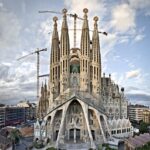 The Fascinating Story: Why Sagrada Familia was Built
The Fascinating Story: Why Sagrada Familia was BuiltIf you want to know other articles similar to Architect Gaudí's Sagrada Familia legacy you can visit the category Sagrada Familia.
Deja una respuesta

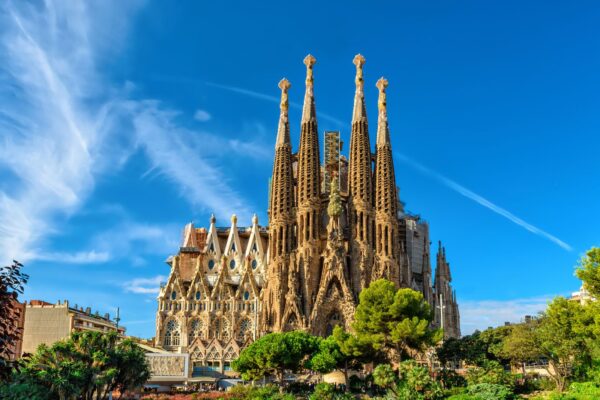
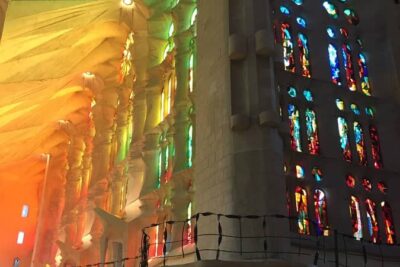



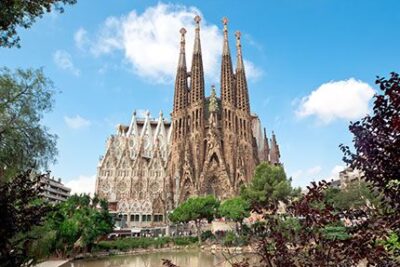
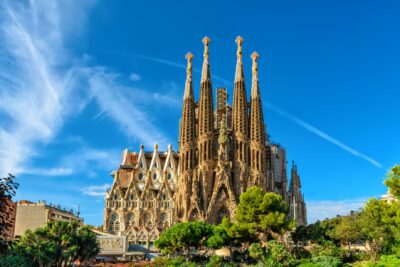
Read more!